#commodore 64 game graphics
Text
Yes Prime Minister: The Computer Game (C64/DOS, Oxford Digital Enterprises, 1987/1988)
The game of the British comedy TV series. You can play it in your browser here, and read a digital manual for the C64 version here. For the DOS version, assume all disks are already inserted.
Tip: Sir Humphrey is the Cabinet Secretary. The protagonist, Prime Minister Jim Hacker, loves finishing his sentences.


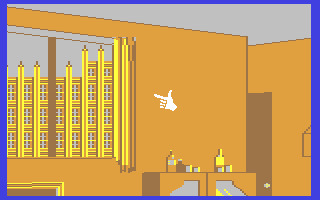

#internet archive#in-browser#dos#dos games#c64#commodore 64#game#games#video game#video games#videogame#videogames#computer game#computer games#obscure games#simulation game#simulation games#licensed games#yes minister#yes prime minister#retro games#retro gaming#retro graphics#1987#1988
78 notes
·
View notes
Text
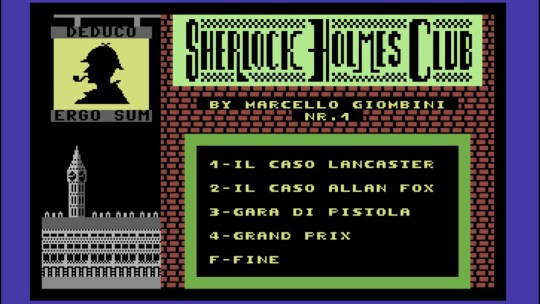




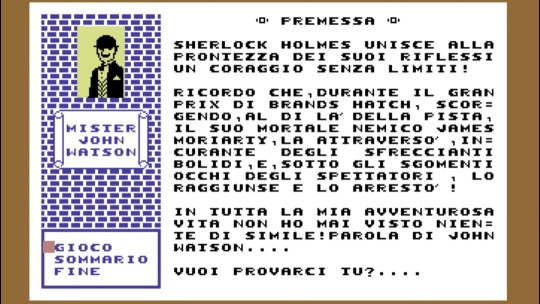
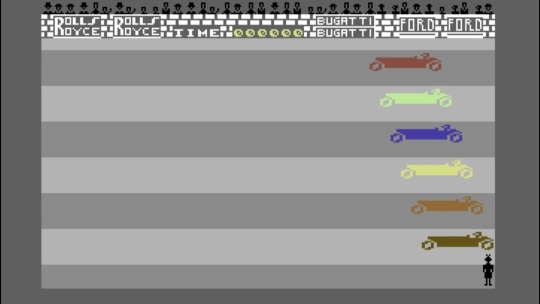
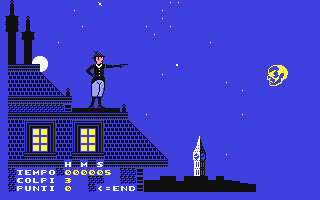
"Sherlock Holmes Club" for the Commodore 64 by Marcello Giombini (1986)
#i tried to play through it but unfortunately i do not speak italian yet#i enjoy the graphics though#marcello giombini#sherlock holmes club#video game#sherlock holmes game#vintage video game#commodore 64#sherlock holmes#holmes
27 notes
·
View notes
Text

Logo Design for PerGioco Point :)
I accept graphic and illustrations commissions! Let me know if you're interested. 🖤
#illustration#logo design#digital art#commodore 64#retro games#retro#graphic design#adobe illustrator#graphic art
2 notes
·
View notes
Text
Bruce Lee: A Vintage Martial Arts Odyssey on Atari 8-bit - Exploring the Classic Gem of the '80s
In the annals of classic gaming, few titles hold the nostalgic weight and martial arts flair quite like Bruce Lee. Released in 1984 for the Atari 8-bit family, this platform game, penned by Ron J. Fortier and brought to life by Datasoft, remains a timeless gem. Let’s embark on a journey through the chambers of a wizard’s tower, exploring the graphics, gameplay, and lasting impact of Bruce…

View On WordPress
#&039;80s video games#Atari 8-bit#Bruce Lee game#classic chiptune music#Commodore 64#gaming nostalgia#historical video games.#martial arts platformer#multiplayer gaming#nostalgic graphics#retro gaming
3 notes
·
View notes
Video
youtube
Back Cover to AI Art S2E54 - Psycho
Older video games were notorious for back cover descriptions that have nothing to do with the game so let's see what a text-to-image generator makes of these descriptions. Season 2 sees an increase in art creations for each game up from 1 in the first season to 6 for the second season
1. Intro - 00:00
2. Back Cover and Text Description - 00:10
3. Creation 1 - 00:30
4. Creation 2 - 00:50
5. Creation 3 - 01:10
6. Creation 4 - 01:30
7. Creation 5 - 01:50
8. Creation 6 - 02:10
9. Outro – 02:30
Released in 1988 for DOS and the Commodore 64, Psycho is very loosely based on the 1960s Alfred Hitchcock film of the same name, developed by Starsoft Development Laboratories, Psycho is a graphic detective adventure horror game, which uses a key-driven verb interface.
The following year in 1989 the game would be ported to the Amiga and Atari ST, the game was not well-received going by the handful of reviews that have survived since its release 35 years ago.
For more Back Cover to AI Art videos check out these playlists
Season 1 of Back Cover to AI Art
https://www.youtube.com/playlist?list=PLFJOZYl1h1CGhd82prEQGWAVxY3wuQlx3
Season 2 of Back Cover to AI Art
https://www.youtube.com/playlist?list=PLFJOZYl1h1CEdLNgql_n-7b20wZwo_yAD
#youtube#psycho#ai#80s games#80s gaming#back cover#ms-dos#commodore 64#generative ai#starsoft development laboratories#graphic detective#graphic adventure#ai artworks#horror#amiga#ai art community#atari st#ai art#ai generated#artificial intelligence#digital art#ai art generation#generative art#machine learning
0 notes
Text




If you had a Commodore 64, you were guaranteed to have 2 racing games in your collection: Pole Position and Out Run. Released to arcades in 1988 by Sega, nice graphics, gameplay and a bangin' soundtrack (which I've treated you to above!) helped to quickly make it popular, resulting in a conversion to multiple platforms, the C64 port being picked up by U.S. Gold. The cars in the game are modeled after their real life counterparts, a 1972 Volkswagen Beetle, 1971 Chevrolet Corvette, 1985 Porsche 911, and a 1985 BMW 325i Cabriolet E30. The first release of Out Run also included a cassette of the music from the original arcade version.
72 notes
·
View notes
Text
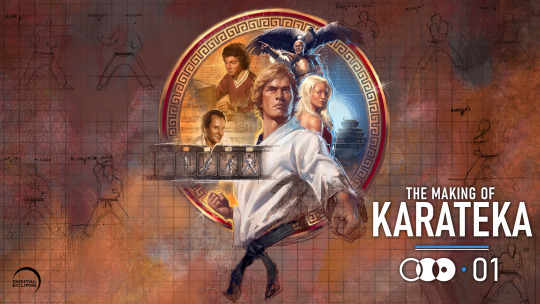
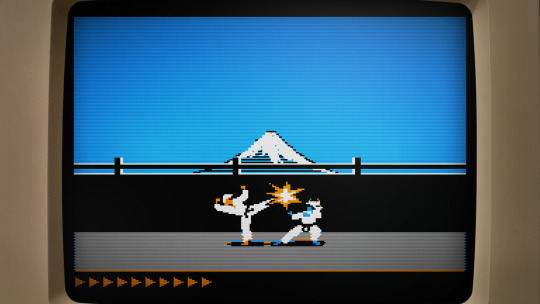
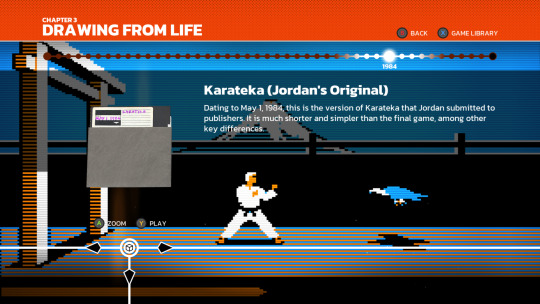


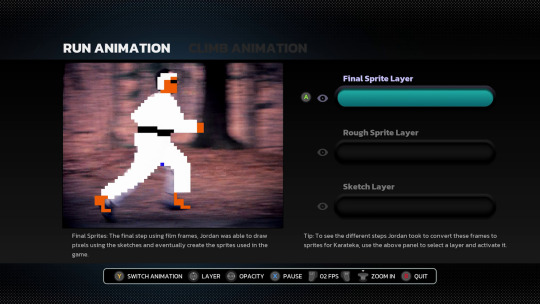
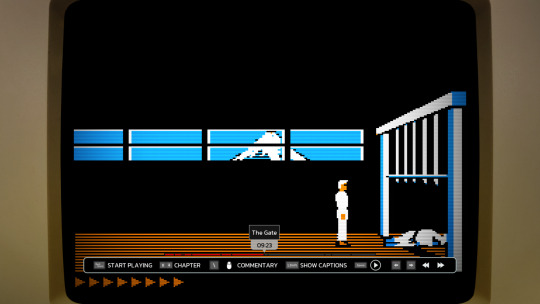
I never played Karateka in the 80s, but as a big fan of Prince of Persia and Jordan Mechner's journals, I was stoked to hear that an interactive documentary about Jordan's prototypical cinematic platformer was in the works by Digital Eclipse.
Released this week, The Making of Karateka on the surface looks like any other game you buy through Steam ($20, Windows-only), GOG, or whichever favorite store or console you prefer (available also for Xbox, PS4/5, Switch). Once the thing loads though, you really get 3 things: a documentary, the original Karateka, and a new remaster.
The documentary part is an audio-visual slideshow retelling Jordan's development story starting with his teenage years pitching his earlier title Deathbounce to the publishing house Brøderbund. It's an interesting look into the iterative process, seen through correspondence letters, journal entries, and many playable builds at various stages of completion. After we reach the eventual rejection of that title, Jordan comes back with a prototype of a visual-narrative experience unseen on home computers. We get to follow Karateka's full life cycle from pre- to post-production, ending with the conception of its sequel (which eventually turned into Prince of Persia). It's a real treasure trove! Fellow pixel artists will appreciate the many graph-paper sketches and interactive overlays of final game sprites compared to rotoscoped outlines and filmed footage. There are also video segments, from a comprehensive breakdown of the music to interviews with other developers reflecting on the impact Jordan's games had on their careers. You'll even encounter a fan letter signed by the one and only "John Romero, Disciple of the Great Jordan and worshipper of the Magnificent Mechner!" (I kid you not, you can't make this stuff up).
Perhaps just as crucial for an interactive documentary like this, you can launch any of the floppy disks in the emulator, trying out various iterations and ports of Karateka.

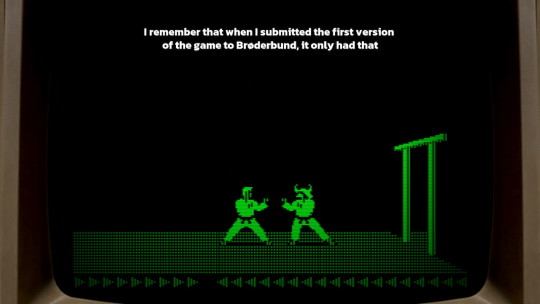
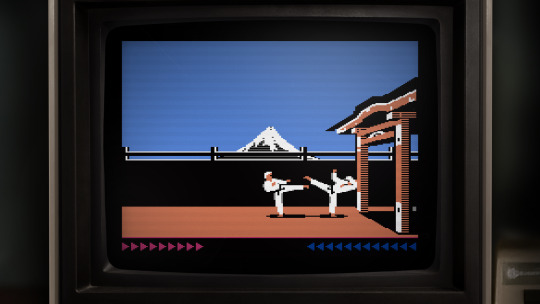
The emulation is fantastic and lets you fiddle with display settings (monochrome or color display, scanlines, pixel perfect or zoomed) as well as enhance the frame rate. You can even rewind the many deaths you will face if you've never played the game before (like me). If you spend some more time obsessing over the weird artifacts of the Apple II hi-res graphics, you might even go down the rabbit hole of realizing that on the Apple II you didn't really paint colors as much as you used different monochrome dithering patterns that the graphics display would then turn into 4 different hues. A fascinating learning experience if you include some of your own research online!
youtube
Add to this the Commodore 64 and the Atari 8-bit versions to compare how the graphics got adapted across the earlier ports and you have a nice way to relieve the mid-80s with a bit of help from modern emulation (I did beat the C64 version without rewinding though!). I'd love to see more art from the other remakes, especially the 16-bit Atari ST port, but I understand their decision to omit playable versions of those due to the lower quality on the gameplay side of the translations.
This brings us to the final part of the package, the modern remaster. Unlike the 2012 complete reimagining of the game (with 3D graphics and all), Digital Eclipse approached the remake as the ultimate port of the original to an imaginary system along the lines of a 90s VGA PC.




It's well done. Some of the fully-redrawn scenes are a bit overpainted for my taste (I'd prefer a pixel art rendition of the castle than a blurry photographic collage, although there were many games in the 90s that did take this approach), but the in-game graphics are really in style, including the smooth animations that are like one would imagine granted a beefier CPU. It's also a sort of director's cut with previously unseen scenes added, in particular, the battle with the leopard as a clever action-puzzle in the middle. The AI is unfortunately even less challenging than Jordan's implementation. As great as the 6-move fighting system could have been, you yet again resort to simply kicking away opponents as they tirelessly crawl into your range. There isn't even the nuance from the original where you were the one who had to approach some enemies with skilled timing. On the other hand, you now have optional goals and achievements that make the repetitive/easy combat work in your favor (stringing various combos, beating opponents or the level under a time limit …). As the Digital Eclipse president Mike Mika admits at the end of the welcome commentary mode, they didn't manage to achieve their perfect port, but they did come close.
In conclusion, I thoroughly enjoyed playing both the original as well as the remake and while the combat system lacks any sort of depth beneath its stunning animations, Karateka is instead a monumental experience for its presentation. Big characters with personality and realistic motion are displayed through cinematic camera cuts and story vignettes (3 years before Ron Gilbert came up with the word "cutscene"). There are details like animating the unfortunate falling off the cliff at the start of the game, or respectfully bowing to the first guard as they bow in return. Jordan's creative work is precious and worth the attention this release gifts it.
I highly recommend The Making of Karateka to all retro gamers and/or game developers for its immersive documentation which provides an experience that goes beyond the usual video documentaries. It's interactive—just like the subject it's talking about—something I want to see more in the future. And if the $20 by any chance seems high to you, consider that the original retailed at $35 (and that was in 1984 dollars).
youtube
77 notes
·
View notes
Note
What kind of work can be done on a commodore 64 or those other old computers? The tech back then was extremely limited but I keep seeing portable IBMs and such for office guys.
I asked a handful of friends for good examples, and while this isn't an exhaustive list, it should give you a taste.
I'll lean into the Commodore 64 as a baseline for what era to hone in one, let's take a look at 1982 +/-5 years.
A C64 can do home finances, spreadsheets, word processing, some math programming, and all sorts of other other basic productivity work. Games were the big thing you bought a C64 for, but we're not talking about games here -- we're talking about work. I bought one that someone used to write and maintain a local user group newsletter on both a C64C and C128D for years, printing labels and letters with their own home equipment, mailing floppies full of software around, that sorta thing.
IBM PCs eventually became capable of handling computer aided design (CAD) work, along with a bunch of other standard productivity software. The famous AutoCAD was mostly used on this platform, but it began life on S-100 based systems from the 1970s.
Spreadsheets were a really big deal for some platforms. Visicalc was the killer app that the Apple II can credit its initial success with. Many other platforms had clones of Visicalc (and eventually ports) because it was groundbreaking to do that sort of list-based mathematical work so quickly, and so error-free. I can't forget to mention Lotus 1-2-3 on the IBM PC compatibles, a staple of offices for a long time before Microsoft Office dominance.
CP/M machines like Kaypro luggables were an inexpensive way of making a "portable" productivity box, handling some of the lighter tasks mentioned above (as they had no graphics functionality).
The TRS-80 Model 100 was able to do alot of computing (mostly word processing) on nothing but a few AA batteries. They were a staple of field correspondence for newspaper journalists because they had an integrated modem. They're little slabs of computer, but they're awesomely portable, and great for writing on the go. Everyone you hear going nuts over cyberdecks gets that because of the Model 100.
Centurion minicomputers were mostly doing finances and general ledger work for oil companies out of Texas, but were used for all sorts of other comparable work. They were multi-user systems, running several terminals and atleast one printer on one central database. These were not high-performance machines, but entire offices were built around them.
Tandy, Panasonic, Sharp, and other brands of pocket computers were used for things like portable math, credit, loan, etc. calculation for car dealerships. Aircraft calculations, replacing slide rules were one other application available on cassette. These went beyond what a standard pocket calculator could do without a whole lot of extra work.
Even something like the IBM 5340 with an incredibly limited amount of RAM but it could handle tracking a general ledger, accounts receivable, inventory management, storing service orders for your company. Small bank branches uses them because they had peripherals that could handle automatic reading of the magnetic ink used on checks. Boring stuff, but important stuff.
I haven't even mentioned Digital Equipment Corporation, Data General, or a dozen other manufacturers.
I'm curious which portable IBM you were referring to initially.
All of these examples are limited by today's standards, but these were considered standard or even top of the line machines at the time. If you write software to take advantage of the hardware you have, however limited, you can do a surprising amount of work on a computer of that era.
43 notes
·
View notes
Text
Apparently, Duke Nukem stole certain graphics from Turrican, Savage and even a Megaman game for the DOS.



At the very least, it highlights how lax game development was that some devs were like "meh whatever".
And Duke Nukem is cool, so i can't be mad at a little plagiarism here and there lol.
The Megaman DOS stuff interests me because apparently it started as a fan project and became official (But it also seems that the main dev had experience working with Capcom USA and porting Street Fighter to Commodore 64).
Kinda reminds me of when id Software did an unauthorized "port" of Super Mario Bros 3 using Dangerous Dave (Dangerous Dave in Copyright Infringement).

#duke nukem#apogee software#3d realms#trivia#assets#pixel art#megaman#capcom#savage#probe software#turrican#rainbow arts#id software#dangerous dave#nintendo#super mario bros
7 notes
·
View notes
Text
The BFF and I are reminiscing about the early days of computers and the internet, and I have to share a few observations.
My first "computer" was a TI-99/4a, made by Texas Instruments (the calculator people). This was in 1983. It was similar to an Atari or Commodore-64 in that it could play games, but it could also be added on to with various hardware. My parents got hardcore into this. Aside from learning about programming, we also had a 300 baud acoustic modem - the kind you literally put the phone receiver on - and I was able to access local bulletin boards and talk to strangers from far away! V e r y s l o w l y. We later got more peripherals like a graphics card and a big old dot-matrix printer. I remember writing school papers on it.
The first computer that belonged to me was an Apple Mac LC that I got for college. It was super expensive and I still have the base somewhere, but the monitor is long gone. I went online with that thing with an external modem... I think the first one I got was a 14.4k. Yes, I did the whole AOL thing.
Internet services were preceded by these sort of walled-garden services like AOL (America Online), Compuserve, and Prodigy. I remember getting into RP forums on Prodigy (specifically for Pern and the Dragon Prince series), running up a huge bill, and getting it canceled. You could chat on these and participate in other activities like games (I remember winning a copy of one of Terry Brooks' novels on Prodigy, but there were no websites or anything like that.
For some time, when the first Internet service providers (ISPs) came into being, I worked at one, answering phones and doing some very basic tech support (literally "have you tried turning it off and on again"). I did billing as well, which was when I first learned that people just... didn't think they had to pay their bills. Three months of non-payment and their service would get cut off and they'd call in, livid. It was an experience. We also played lots of interoffice matches of DOOM and Quake, so it balanced out. I used to use my office computer to download sound clips from movies and parts of songs.
I only used Usenet a little, but it was a thriving community full of various posters and groups. My favorite group was probably alt.barney.die.die.die.
While working at the above ISP, I had to make a website so that I knew some HTML, since they actually wanted people to help customers with that. (I should add there were only like five employees there; the guy who started it up basically was using investment money from his dad. I also remember he tried to make me learn how to mess with circuit boards. I still don't know why he wanted to teach me, but no, I did not retain one single thing from that.) Anyway, I learned basic HTML, and I still have a website today that still uses exceedingly basic HTML.
Can you imagine calling Comcast today and going "yes, I'm struggling with this bit of javascript here, I expect you to help me."
No, because even if you pay them four times what you paid my ISP back then (I think it was around $30 a month for a dedicated DNS), they would tell you to look up a tutorial on youtube.
I don't remember when we switched to 24/7 connections and cable internet and broadband and everything, but I can tell you that I remember getting online, checking my email, going on IRC for a little bit, looking at websites, maybe doing some RP on a MUSH, and then logging off and shutting it down at the end of the night. We didn't expect everyone to be THERE all the time.
Although while I was still with the ISP, I used to get on PernMUSH NC first thing in the morning and sit there all day so my name would be at the bottom of the user list. Because that was a powerful status to have.
My ex and I would trade off computer time. We didn't even play games that needed to be connected to the Internet. We did other things. Can you imagine?
I downloaded So Much Shit from Napster. So. Much. (A lot of it was mislabeled garbage, too. You wouldn't believe how many crappy "parody" songs got attributed to Weird Al.) Didn't use Limewire nearly as much because it was so riddled with viruses. Damn you, Lars Ulrich.
Those days were wild. You could find the worst shit online, but also some of the best. People used Tripod and Geocities and mailing lists and Usenet, just every kind of thing to connect to each other. I had a site just for my fanfic, and I hosted friends on it and even designed their sites. Before AO3, before Livejournal, we were making it work any way we could. I still remember the Outside the Lines mailing list for comic fandom and how people would post full fics on there. And others would complain that not enough Dark Horse comics were getting fics. Some things never do change.
We also regularly got secondary phone lines so that we could use the modem and not be interrupted by phone calls, or have people scream that they'd been trying to call us for hours. Everything had to be connected by wires. If you wanted to game with your friends, you took your PC (and monitor and anything else you needed) over to their house, plugged in and had a LAN party.
Or if you just wanted to browse the Internet without your own PC, you'd go to an Internet cafe and rent one for a couple hours. Sit there, have your coffee and go online.
Everything is different these days. Everyone is connected, online, all the time, and you're practically not allowed to be disconnected. You must be available at all times. As nice as it is to get all our information quickly, I do kind of miss when the Internet wasn't so omnipresent. I could do without what social media has done to us, too. And I really miss MUDs and MUSHes. Text based games where you could RP or just wander around killing mobs.
Anyway, it's been an interesting experience growing up through all of this. I never would have imagined having a phone with all my music and the Internet on it, but they're just ubiquitous now. Strange to think of not having it everywhere I go, and WiFi for everything.
3 notes
·
View notes
Text
youtube
Part of the sports simulation series from the Oliver Twins (with Jet Bike Simulator being a personal favorite), this multi-platform racer published by Codemasters offers a top-down perspective akin to the classic Super Sprint. Unlike the former though, it's a two-car race where the player takes control of one car, while the computer or a second human player manages the other.
The twelve races each span three laps, propelling the player to the next track upon victory. However, completion of all courses prompts a congratulatory message before abruptly restarting from the first track with the same difficulty level, diminishing the game's replay value. Alternatively, the game ends if the CPU crosses the finish line first.
Despite this drawback, the title provides enjoyable gameplay, diverse tracks, and a satisfying level of challenge, albeit with occasional imbalances—some tracks are a breeze, while others prove nightmarishly difficult. The absence of four cars, as seen in Jetbike Simulator, is noted, leaving room for speculation on the decision.
Notably, the graphics, while not exceptional, are passable, but the sound design falls short. While the engine noise adheres to the expected standard, the sound produced by the cars when steering becomes excessively noisy, detracting from the overall enjoyment of the game. The impulse to mute the volume quickly arises, but it's impractical as the sound aids in steering calibration for navigating bends.
In conclusion, not a bad game, but hindered by flaws that prevent it from attaining the status of a classic 80s racer, at least on the Commodore 64.
#retro gaming#retro gamer#retro games#video games#gaming#old school gaming#old gamer#gaming videos#youtube video#longplay#back to the past#I want to go back#those were the days#good old days#c64#commodore 64#racing games#grand prix simulator#love gaming#gaming life#Youtube
2 notes
·
View notes
Text
Tass Times in Tonetown (Apple II/Apple IIgs/C64/DOS (actually PC Booter)/Classic Mac, Interplay, 1986)
You can play it in your browser here.
To play the Apple II version, download the two .dsk ('STORAGE MEDIA IMAGE' files from here and here and use them with the alternate in-browser emulator here.
You can read the newspaper 'feelie' that came with the game here.

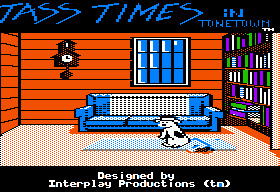

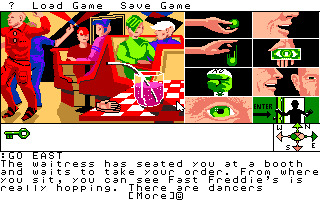



#internet archive#in-browser#apple ii#apple 2#apple iigs#apple 2gs#c64#commodore 64#dos#dos games#apple mac#apple macintosh#game#games#video game#video games#videogame#videogames#computer game#computer games#retro games#retro gaming#retro graphics#game history#gaming history#text adventure#text adventures#1986#1980s#80s
31 notes
·
View notes
Text
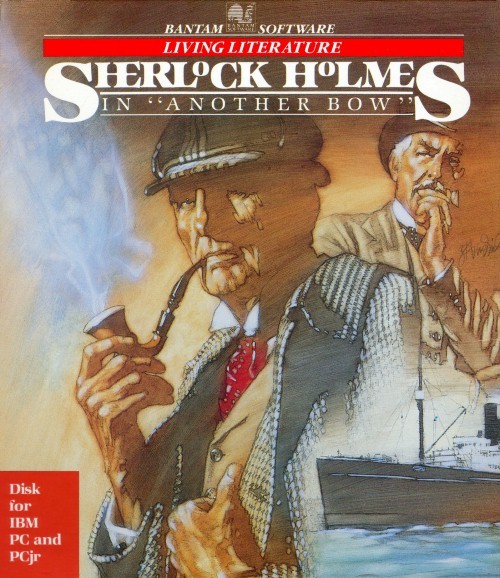


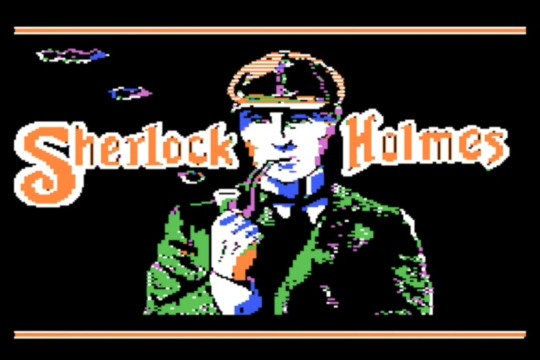



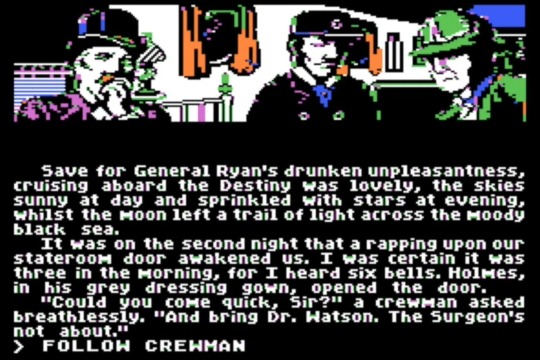

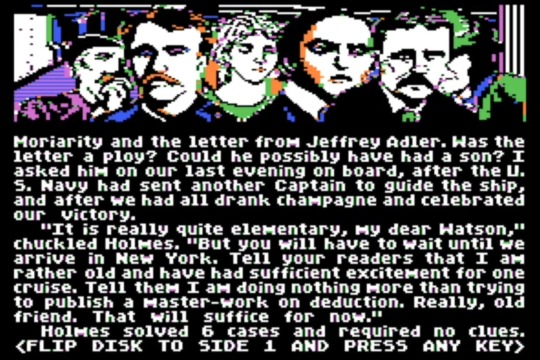
"Sherlock Holmes: Another Bow" video game developed by Imagic and published by Bantam Software for Commodore 64, Apple II, Macintosh, and PC and later rereleased by Firebird (1980-1985)
#theres so many holmes games from the 80s its insane#having trouble with playing some of them so these are screenshots from someone elses playthrough#these are the apple ii graphics#they change quite a bit between devices#theres various uploads of it on the internet archive and other places#sherlock holmes another bow#sherlock holmes: another bow#80s games#apple ii#commodore 64#Macintosh#textual game#Sherlock holmes game#other#vintage video games#retro gaming#vintage video game#sherlock holmes#holmes#bantam software
6 notes
·
View notes
Text

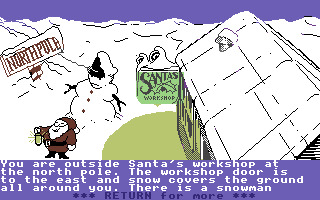
Merry Christmas From Melbourne House (Commodore 64)
Developed/Published by: Melbourne House
Released: 1984
Completed: 11/12/2023
Completion: Beat it with a score of 100 out of 100.
It’s 1984 and the Christmas cash-in market is finally mature, with five whole games released for home computers (at the very least.) Alphabetically first in my list (because Icon Software chose to go with “Xmas” on their merry release) Merry Christmas From Melbourne House is a slight cheat because it’s really just a tiny tech demo/bit of marketing, but it was sold, costing 95p (the price of tape duplication and postage?) for readers of Commodore User (it was actually in the December issue and the deadline was December 17th to get your money to them, which makes me wonder how many people played this long after things stopped being festive.)
It is though, honestly, what I was kind of expecting from A Christmas Adventure. It’s a short, very easy little adventure game that… passes about half an hour and actually manages to feel Christmassy.
Like A Christmas Adventure, you’re tasked with making sure Santa can get away from the north pole to deliver presents, but in a shocking twist… YOU are Santa. The game’s blurb claims he’s “attempting to stop an industrial dispute” that “is threatening the delivery of toys to children of the world” and it sounds like jolly old saint nick is a fat cat like the rest of ‘em, and out of solidarity with the elves and workers everywhere I spent quite a bit of time typing things like “GIVE ELVES RAISE” and “PROVIDE TIME OFF” but the parser never understood it, so I almost didn’t finish this.
The plot is a bit oversold anyway, considering the solution is pretty much “Get off your fat arse and pack your sack of toys yourself, Santa.”
As you’re not doing all that much, the parser is adequate, and the graphics are… genuinely quite evocative. They are important too–the toys you have to pack are all on one screen. I don’t generally like this design in graphic text adventures–where you don’t get told everything in text (I’m a VERBOSE man in Infocom games)–and having to work out directions here was not my favourite, But it worked well enough, and I was even charmed by the full screen advert for Melbourne House games.
Anyway, lemme see how much 95p is in today’s money. £3.77. I can’t really say people got their money’s worth here, but they could do a lot worse.
Will I ever play it again? I’m good.
Final Thought: Joe Pranevich over at The Adventurer’s Guild played through this as well if you’d like to read something more in-depth about it, with the bonus that one of the developers, Dave Johnston, shows up in the comments, revealing that it was developed “in a matter on weeks using an in-house text engine and a tweaked sprite engine based on Way of the Exploding Fist code” and that he didn’t even have a copy. They paid people at Melbourne House so poorly that they couldn’t raise 95p???
Support Every Game I’ve Finished on ko-fi! You can pick up a digital copy of exp. 2600, a zine featuring all-exclusive writing at my shop, or join as a supporter at just $1 a month and get articles like this a week early.
#gaming#video games#games#txt#text#review#commodore 64#c64#merry christmas from melbourne house#melbourne house#christmas#1984
2 notes
·
View notes
Text
RetroGaming Shorts Part 088 - Cristoforo Colombo American Cup
Cristoforo Colombo American Cup 1985 (Commodore 64)
Game design inspiration for an exploration game … ignore the sluggishness of the BASIC code, and look at how the use of map-like graphics and the pacing provide a feeling of scale. The same ideas could be adapted to, say, a space Oregon Trail type game, for example.
youtube
3 notes
·
View notes
Text

Cabal (カベール, Kabēru) is a 1988 arcade shooter video game originally developed by TAD Corporation and published in Japan by Taito, in North America by Fabtek and in Europe by Capcom. In the game, the player controls a commando, viewed from behind, trying to destroy various enemy military bases. The game was innovative for the era, but only a mild success in the arcades, and became better known for its various home conversions.
Cabal has one-player and two-player-simultaneous modes of gameplay. Each player assumes the role of an unnamed commando trying to destroy several enemy military bases. There are 5 stages with four screens each. The player starts with a stock of three lives and uses a gun with limitless ammunition and a fixed number of grenades to fend off enemy troops and attack the base. The commando is seen from behind and starts behind a protective wall which can be damaged and shattered by enemy fire. To stay alive, the player needs to avoid enemy bullets by running left or right, hiding behind cover, or using a dodge-roll. An enemy gauge at the bottom of the screen depletes as foes are destroyed and certain structures (which collapse rather than shatter) are brought down. When the enemy gauge is emptied, the level is successfully completed, all of the remaining buildings onscreen collapse, and the player progresses to the next stage. If a player is killed, he is immediately revived at the cost of one life or the game ends if they have no lives remaining. Boss fights, however, restart from the beginning if the only remaining player dies.
From time to time, power-ups are released from objects destroyed onscreen. Some power-ups give special weapons such as an extremely fast-firing machine gun or an automatic shotgun with a lower firing rate and larger area of effect. Others grant extra grenades or additional points.
The arcade cabinet is a standard upright cabinet. Each player uses a trackball to move their character from side to side and move the crosshairs about the screen. On later board revisions, a joystick was installed instead with an optional sub-PCB for use with a trackball. With a trackball, dodge-rolling is done by pushing the trackball to maximum speed.
Cabal was somewhat innovative in that it featured a 3D perspective in which the player character was situated in the foreground with an over-the-shoulder camera view, similar to modern third-person shooters. Players cannot move the character while firing (holding down the fire button gives players control of the aiming cursor), and when moving the character to avoid incoming bullets, the aiming cursor moves along in tandem. This creates the need for a careful balance between offensive and defensive tactics, separating Cabal from run-and-gun shooters which relied more on reflexes. Advanced gameplay involves destructible asset management in balancing dodging (which gets riskier as the number of enemy projectiles on screen increases) with the safer alternative of taking cover behind a protective but limited durability wall.
Cabal was ported to several home computers of the era, including the DOS computers, Amstrad CPC, Commodore 64, ZX Spectrum, Atari ST and Amiga. It was also ported to the Nintendo Entertainment System console by Rare. A version for the Atari Lynx was previewed and even slated to be published in April 1992, but it was never released by Fabtek.
When converting the game to the Nintendo Entertainment System, Rare were given a Cabal cabinet but did not have access to the game's source code, so they had to play the game over and over and redraw the graphics from memory. To accommodate the many layers and sprites of the arcade game, programmer Anthony Ball used a common coding trick: swapping sprites from left to right every other frame. This has the negative side effect of causing the sprites to flicker when they reach the console's limit of eight per line, but Ball, like many programmers of the era, found this an acceptable trade-off for including all the game's content, and in a 2016 interview he said he is happy with the quality of the conversion.
3 notes
·
View notes